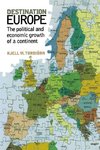
-
 Anglický jazyk
Anglický jazyk
LAND TENURE & THE REVOLUTION IN DEMOCRACY & BIRTH-CONTROL IN FRANCE
Autor: Sheila Newman
The French Revolution was both democratic and demographic and did not begin and end in 1789. The French were able to sustain it over several generations because they retained a relatively clan-based land-tenure system, able to preserve intergenerational... Viac o knihe
Na objednávku
33.03 €
bežná cena: 36.70 €
O knihe
The French Revolution was both democratic and demographic and did not begin and end in 1789. The French were able to sustain it over several generations because they retained a relatively clan-based land-tenure system, able to preserve intergenerational values and projects and to exploit secret printing, secret societies - including Freemasonry - and secret information via a tight pedlar network. The uptake of birth-control among ordinary people was a measure of democratic self-determination. The French, who had high birth rates and high infant mortality under the Old Regime, began to use contraception widely as monarchy and church domination ended, with a huge drop in family size, more than 100 years before comparable countries. Leading up to the Revolution, sex for pleasure and rejection of traditional authority were normalised among the ordinary French via massive clandestine distribution of pornographic, anti-clerical, and anti-royal literature, which the monarchy had deemed illegal on pain of death. Using comparative methods, the author shows that, although many democratic revolutions were mooted and attempted there, the ordinary British, Irish, and French-Canadians could not maintain organised and effective revolutionary processes or control their family sizes. Their repeatedly fractured populations were easily undermined internally by government spies, whilst the French resisted concerted long-term external military opposition and the temporary reinstallation of monarchies. The book reviews biological, social, and political theory on family size, structure, and transmission of territory, and gives a detailed demographic and revolutionary history of France, Britain, Ireland and French Canada, including a comparative history of corresponding societies and Freemasonry in these countries. The post-Revolutionary French population provides a major example of a population which reduced its fertility prior to industrialisation, despite increasing life expectancies and marriage rates. The French case challenges the still dominant Warren Thomson demographic transition model (1929) that industrialisation is a requirement for a demographic transition from high fertility and low life-expectancy to low fertility and high life-expectancy.
- Vydavateľstvo: Lulu.com
- Rok vydania: 2022
- Formát: Paperback
- Rozmer: 229 x 152 mm
- Jazyk: Anglický jazyk
- ISBN: 9781471666315







 Nemecký jazyk
Nemecký jazyk 
 Ruský jazyk
Ruský jazyk 



